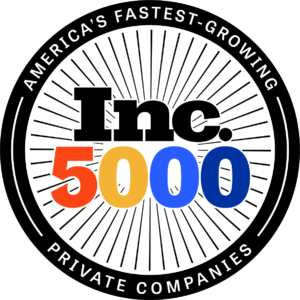
The new lease accounting standards include a variety of disclosure reports to give financial auditors visibility into an organization’s leasing activities. Although the standards do not explicitly mention roll-forward reporting, they do require companies to explain changes to leases on the balance sheet disclosing not only amounts gained or lost, but also why those gains or losses occurred.
What is a roll-forward report?
Roll-forward reports are a valuable tool for meeting this lease accounting requirement. They provide a detailed explanation of lease financials including period over period changes to right-of-use (ROU) assets, as well as short-term and long-term liabilities.
What makes roll-forward reports so valuable for lease accounting and compliance?
The importance of roll-forward reports
If lease activity remained the same over time ,it would besimple to show amortization of ROU assets and liabilities , with schedules specifying asset and liability reductions in each period.
The challenge is that ,in reality, a company’s leases and liabilities are always changing due to events such as:
- New leases or transitions
- Modifications
- Impairments
- Terminations
- Regular amortization
Roll-Forward Reports: Meeting Lease Accounting Standards
To comply with the latest lease accounting standards, accounting must accurately and thoroughly report all those changes, including lease additions or subtractions as well as the reasons why those changes occurred.
Forexample:
- If a company needs to book a loss onan impaired asset ,the lease accounting is required to show the details including the corresponding reduction in the ROU asset.
- If a company received rent abatements and decided to treat them as remeasurement events rather than variable rent expenses, the lease accounting must clearly reflect the resulting amounts and how and why the company calculated them.
Roll-forward reports are an effective method for disclosing these and other changes that occur in the life of company’s leases.
The advantages of roll-forward reports
Theroll-forwardreport ingconcept issimilar toa statement of cash flows, which reconcile the differences between the cash position on the balance sheet and on the P&L statement.
A roll-forward report does the same thing, but forleases—provid inga window into an organization’s lease portfolio, activities and business decisions, including why there are additions or subtractions in lease financials. For instance, a report may show a large change in liability but also reveal it is offset by additional lease assets.
In addition, r oll-forward report sare a vehicle for separating finance lease s fromoperating leasesas required forASC 842compliance. The reports can also segregate and report lease information according to asset classes.
Creating Comprehensive Roll-Forward Reports
1. Data Accuracy
Roll-forward reports outline the changes in your balance sheet period over period. Therefore, the first step to a roll-forward report is to ensure your lease information is accurate, up tod ate andc omplete .
2. Multiple Data Sources and Locations
Roll-forward reports ofteninclude leaseinformationcollectedfrom multiple sources ,such as the different departments responsible for real estate, office and IT equipment, vehicles and other assets. Data gathering may also involve individual locations in different cities, states, regions or countries.
3. Tailoring Reports to Fit Your Needs
The information with in roll-forward reports will vary depending on company structure, assets, and accounting and reporting needs. An example, you might create a report for the entire lease portfolio — or fora single asset, a particular department within the company, a sub-organization within a multi-national corporation or an asset class(such as real estate or equipment).
4. Elements of an Informative Roll-Forward Report
To be truly beneficial, the report must explain why changes happened in lease financials, as well as the amounts. Therefore, roll-forward reports for a ROU asset or a short- or long-term liability typically include the following:
- Beginning balance
- Additions—including new leases, transitions and modifications
- Deductions—including modifications, impairments, terminations and amortizations
- Recalculatede ndingb alance— including the mathematical formula
- Ending balance comparison for the period
- Total liability balance
5. Transaction Classification
The roll-forward report should classify each transaction by asset type and include payments, amortization and interest. Where companies have a classified balance sheet, they should report bothshort-term and long-term liabilities, including monthly reclassifications or, if payments are not monthly, interest accruals.
Why use roll-forward reports?
Roll-forward reports are an important tool for both lease accounting compliance and ongoing lease visibility. They enable financial statement users to easily view lease changes, the reasons behind themand their impact, all in one report.
By implementing a technology platform that automates roll-forward reporting, organization scan streamline information gathering, calculations and reporting while ensuring that the process meets compliance requirements.
Visual Lease’s industry-leading lease accounting platform supports roll-forward reporting for better validation and transparency . The platform ’s roll-forward report capabilities provide userswithaclearunderstanding of lease changes and how they impact the business . Users may easilyviewall the supporting data and leaseactivity right within the platform. Visual Lease canalsoautomatically separate financeandoperating leases for compliance with ASC 842 .
To learn more, watch our on-demand webinar Roll-Forward Reports: When to Do it, How to Do it, and How to Automate It .























